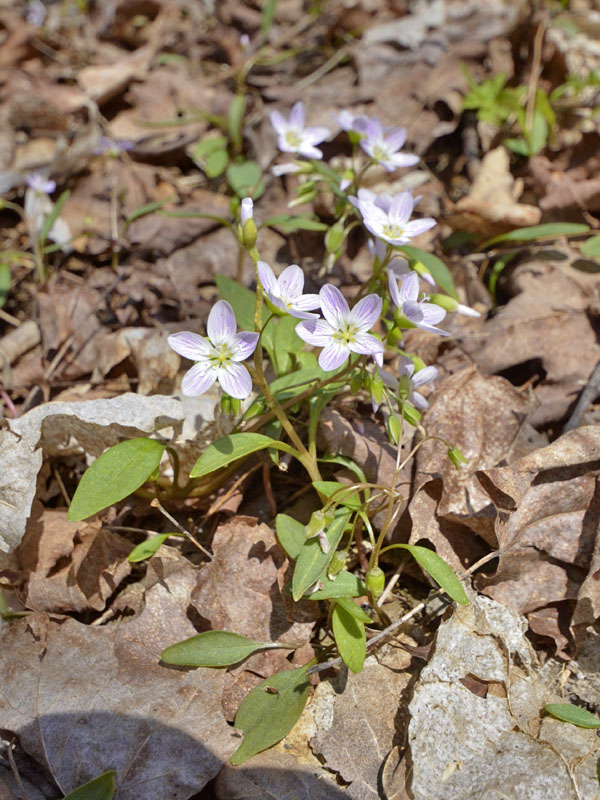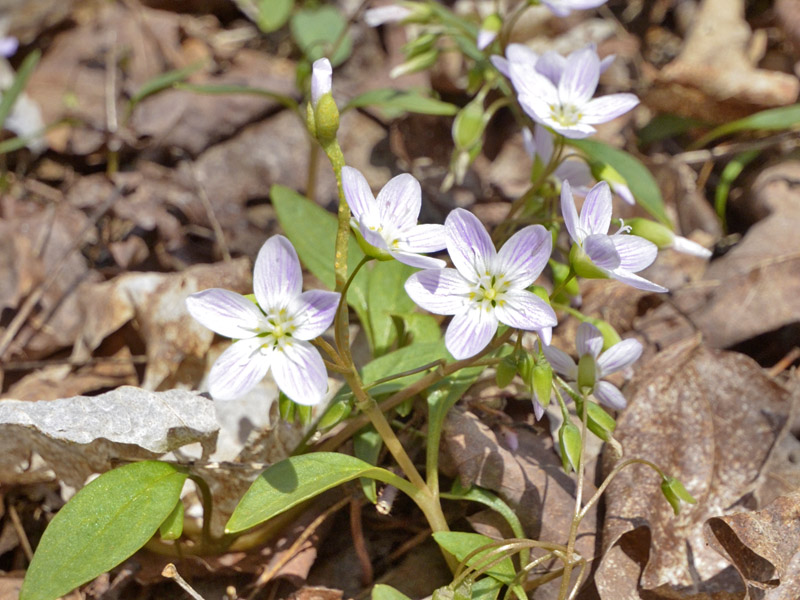Claytonia virginica (Eastern Spring Beauty)
Michael's Opinion
One of the spring gems of Eastern North America but seldom seen in cultivation; pity. I have observed this growing freely in mixed, climax forest stands in the Muskoa's of Ontario, Canada, where it has carpeted the ground in large colonies in early spring.
Botanical Information
| Family | Montiaceae |
| Genus | Claytonia |
| Species | virginica |
| Category | Bulbs, Wildflowers & Weeds |
| Origin | Native to eastern North America. |
| Ethnobotanical Uses Disclaimer | The small tubers are edible, with a flavour similar to that of a chestnut, but time-consuming to collect. |
Details
| USDA Hardiness Zone | 3 - 8 |
| USDA Hardiness Ref. | |
| Canadian Hardiness Zone | 1 - 8 |
| Canada Hardiness Ref. | |
| RHS Hardiness Zone | H4 - H7 |
| RHS Hardiness Ref. | |
| Temperature (°C) | -37 - (-7) |
| Temperature (°F) | -35 - 20 |
| Height | 15 - 23 cm |
| Spread | 15 - 23 cm |
| Growth | Fast |
| Flowering Period | April |
Description and Growing Information
| General Description | A delicate spring wildflower with star-shaped white or light pink flowers and grass-like, dark green leaves and small, edible tubers that are similar to potatoes but taste like chestnuts. |
| Landscape | Excellent for mass planting in rock or wildflower gardens. |
| Propagation | Propagates naturally through bulb offsets and self-seeding. |
| Cultivation | Organically rich soil, high moisture level with full sunlight exposure. |
| Habitat | Mature woodlands, usually in climax stands where there is adequate moisture and a good depth of forest duff. |
| Leaf Description | Narrow, dark green in colour, growing vertically from the bottom of the stem. |
| Flower Description | Light pink petals that take the shape a star in a cluster around the stem with pink veins. |

